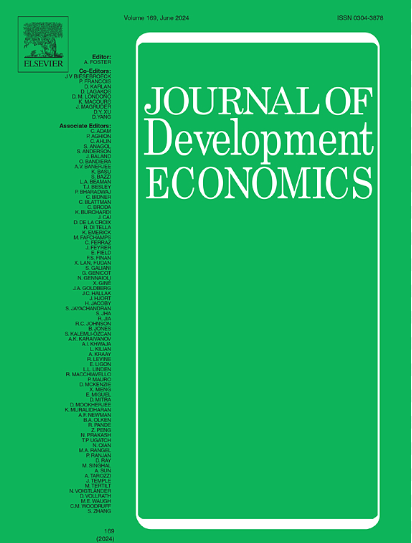The firm-pay gender gap and formal sector churn over the life cycle
IF 5.1
1区 经济学
Q1 ECONOMICS
引用次数: 0
Abstract
We find that women sorting into lower paying firms explains nearly half of the gender pay gap in South Africa. Using matched employer-employee panel data covering the universe of formal workers, we show sorting varies considerably over the life cycle: the firm-pay gender gap is negligible for the youngest workers, grows steeply for 25–35 year olds (i.e. typical child-rearing years), and narrows for older workers. The increase is driven by those continuously employed — while women are almost as likely as men to switch firms, men are more likely to switch to better-paying firms, consistent with discrimination or non-pay amenities. Churn also contributes to the gap (though is relatively constant), since women enter formal employment at worse-paying firms than men. The relative importance of the continuously employed versus entrants depends on the size of the formal sector, thus linking the life cycle patterns underlying gender gaps with economic development.
公司薪酬的性别差距和正式部门在整个生命周期中不断变化
我们发现,南非近一半的性别薪酬差距是由女性进入薪酬较低的公司造成的。使用匹配的雇主-雇员面板数据覆盖了所有正式员工,我们发现,在整个生命周期中,分类差异很大:最年轻的员工的公司薪酬性别差距可以忽略不计,25-35岁(即典型的育儿年龄)的公司薪酬性别差距急剧扩大,而年龄较大的员工则会缩小。这一增长是由那些持续就业的人推动的——尽管女性几乎和男性一样有可能跳槽,但男性更有可能跳槽到薪酬更高的公司,这与歧视或无薪福利是一致的。员工流失率也造成了这一差距(尽管相对稳定),因为女性进入薪酬较低的公司正式工作。持续就业与新进入者的相对重要性取决于正式部门的规模,从而将造成性别差距的生命周期模式与经济发展联系起来。
本文章由计算机程序翻译,如有差异,请以英文原文为准。
求助全文
约1分钟内获得全文
求助全文
来源期刊

Journal of Development Economics
ECONOMICS-
CiteScore
8.30
自引率
4.00%
发文量
126
审稿时长
72 days
期刊介绍:
The Journal of Development Economics publishes papers relating to all aspects of economic development - from immediate policy concerns to structural problems of underdevelopment. The emphasis is on quantitative or analytical work, which is relevant as well as intellectually stimulating.
 求助内容:
求助内容: 应助结果提醒方式:
应助结果提醒方式:


